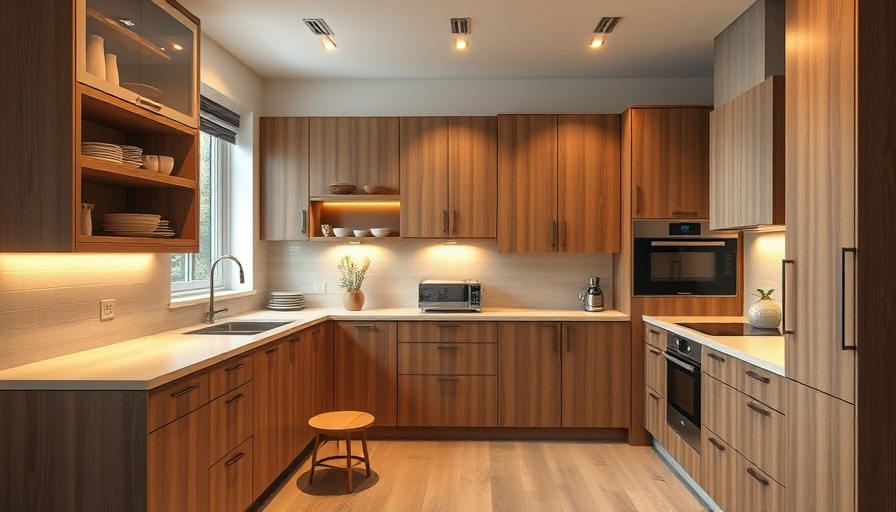
Creating a Kitchen for Comfort and Safety in Aging
As dreams of a forever home materialize, planning a kitchen suitable for aging in place is increasingly essential. Whether you envision your elderly parents moving in or are contemplating your own golden years, thoughtful design can create a safe, accessible, and enjoyable cooking space. In this guide, we’ll explore different features and strategies to ensure your kitchen grows with you, without compromising functionality or style.
The Value of Pullout Pantries
Starting with practical solutions, pullout pantries stand out as invaluable tools in an aging-in-place kitchen. Not only do they allow users to view everything at their fingertips; they also eliminate the physical strain caused by bending and reaching. This innovation significantly enhances the kitchen experience, making it suitable for all ages. By utilizing drawers instead of traditional cabinets, heavy items like small appliances can be conveniently stored away, reducing the physical burden on your back and joints.
Well-Planned Layout Matters
The cornerstone of any kitchen—especially for aging in place—lies in its layout. Maintaining a close proximity between the sink and stove helps prevent spills and potential falls. Maintaining a sufficient workspace reduces awkward movements and prolonged holding of pots, promoting safer cooking practices. According to experts, a well-designed kitchen workspace can save wear and tear on joints and provide efficient functionality, which is particularly important as mobility changes over time.
Accessibility Affects Us All
Accessibility isn’t just for individuals with disabilities; it's beneficial for everyone, including children and guests. Creating wide passages and ensuring that cabinetry is easy to reach can dramatically alter how the kitchen serves your needs. By following guidelines set forth by the Americans with Disabilities Act (ADA), which suggest spaces should allow for wheelchair accessibility, you can help ensure comfort for all users.
Safe Surfaces: Choosing Slip-Resistant Flooring
In kitchens, floor safety cannot be overstated. Slip-resistant flooring options, such as textured tile or specific types of vinyl, can significantly reduce the risks associated with spills and falls. Design choices should ensure no level changes or trip hazards disrupt the kitchen flow, aligning total home safety with style. Easy maintenance surfaces not only prevent accidents but also keep your kitchen looking good longer.
Optimal Lighting Can Save Lives
Proper lighting is another vital aspect often overlooked in kitchen design. Shadows can conceal hazards, and well-placed lighting can illuminate workspaces, cabinets, and walkways. A combination of overhead and under-cabinet lighting, supplemented by task lighting, can make a huge difference in usability. Moreover, smart lighting solutions, like motion sensors and remote control systems, provide added convenience and accessibility for those with limited mobility.
The Importance of Rounded Edges
To enhance kitchen safety, opting for rounded edges on countertops and open shelves can minimize injuries from accidental bumps. The softer surfaces reduce the likelihood of bruises, making the environment safer, especially as coordination may lessen with age.
Innovative Kitchen Appliances
Perhaps equally important as the layout, kitchen appliances must reflect a user-centered design. Features like front-mounted range knobs and drawer microwaves help eliminate unnecessary bending or reaching. Additionally, appliances with automatic shut-off and visual alerts can significantly enhance safety by reducing the risks of accidents.
Plan for the Future
While immediate needs shape our kitchen choices, planning for the future is equally important. By incorporating aging-in-place design principles from the outset, homeowners can enjoy peace of mind. This prepares your home for the eventualities of aging, allowing for continued comfort and independence.
Conclusion: A Kitchen for All
Creating a kitchen that accommodates varying needs and abilities isn't just about safety; it's about harmony in the home. By infusing thoughtful design principles, not only are we preparing for aging in place, we're also making spaces more welcoming for everyone. To explore options for renovating your kitchen, consider engaging a professional who specializes in aging-in-place design. Doing so will ensure your dreams of a functional, safe, and beautiful kitchen become a reality!
 Add Row
Add Row  Add
Add 




 Add Row
Add Row  Add
Add 

Write A Comment